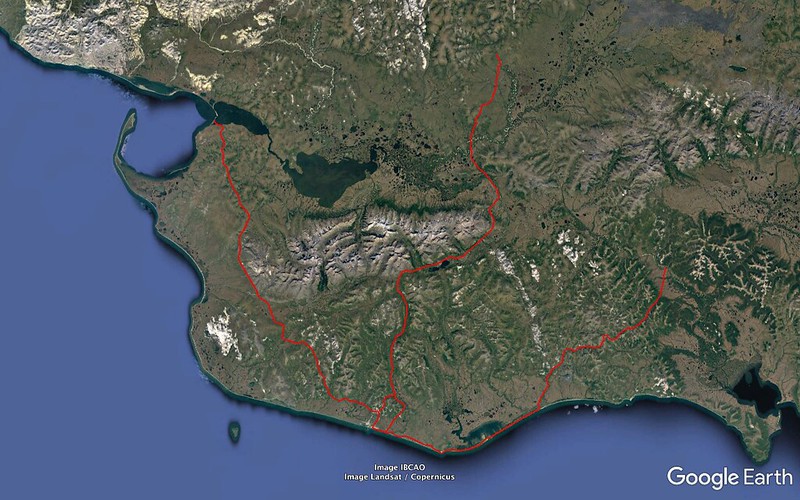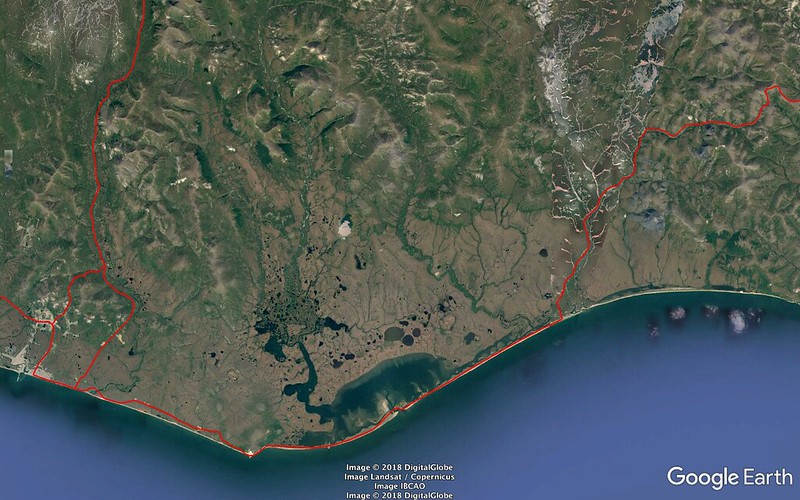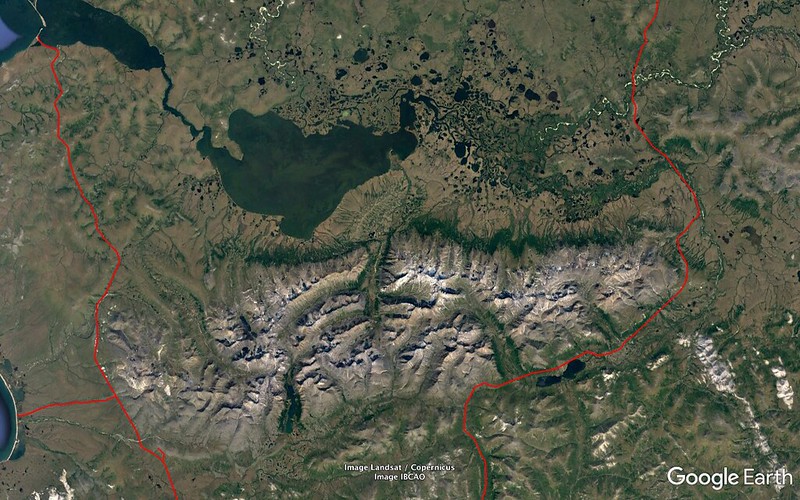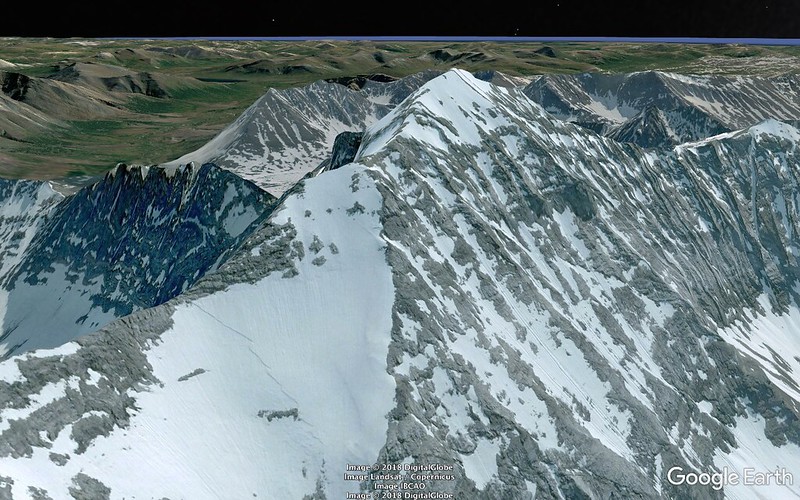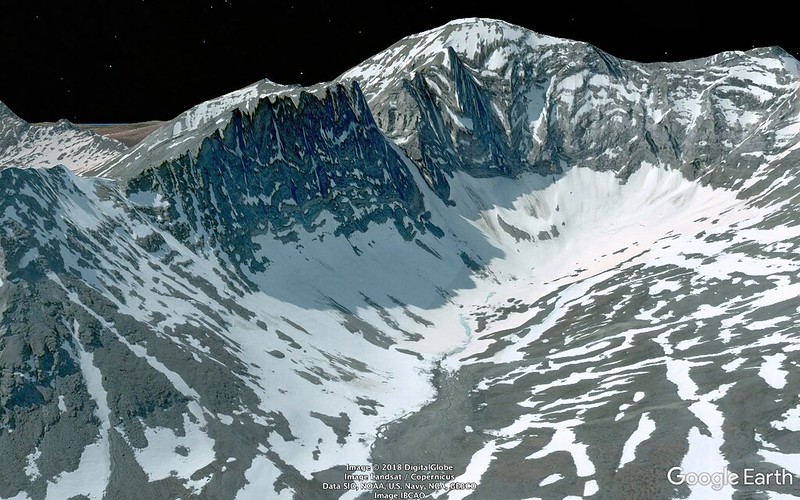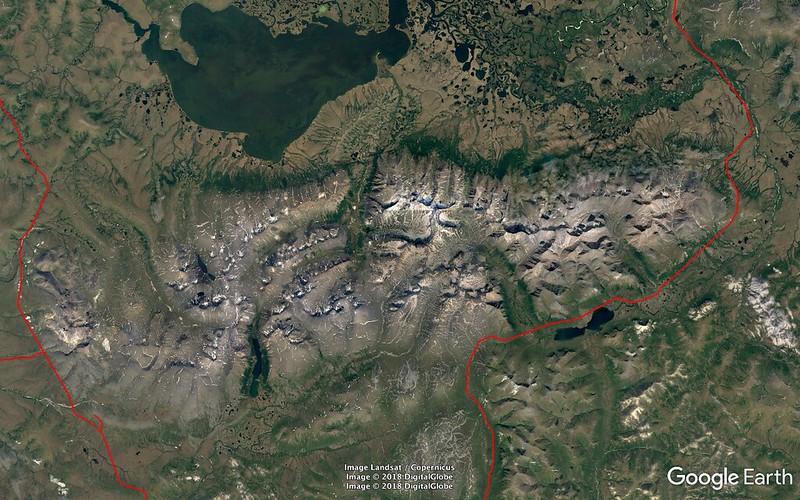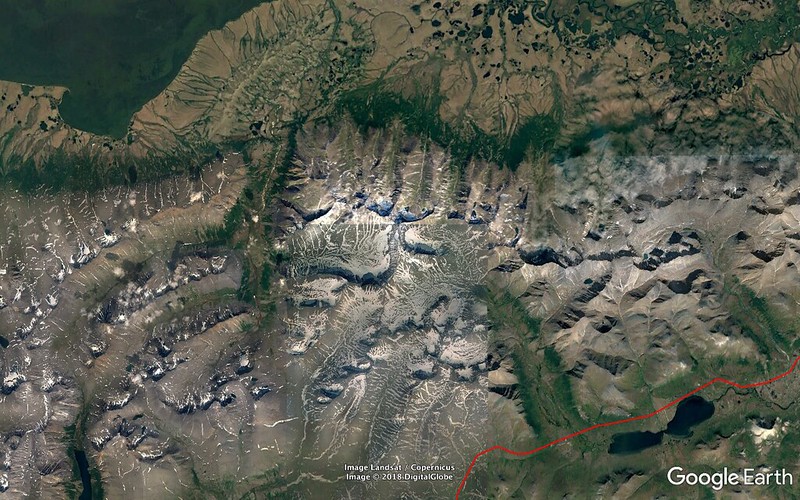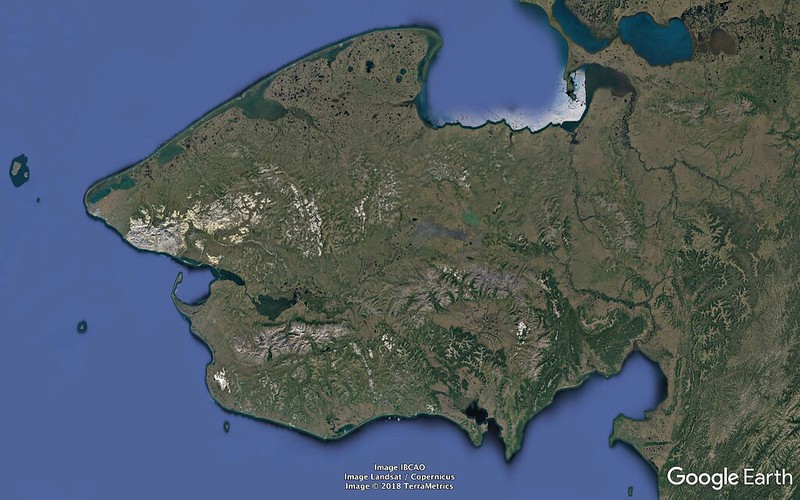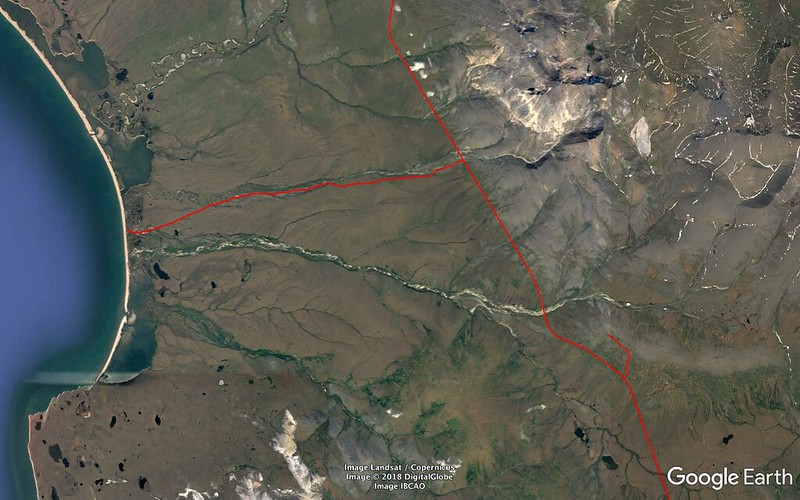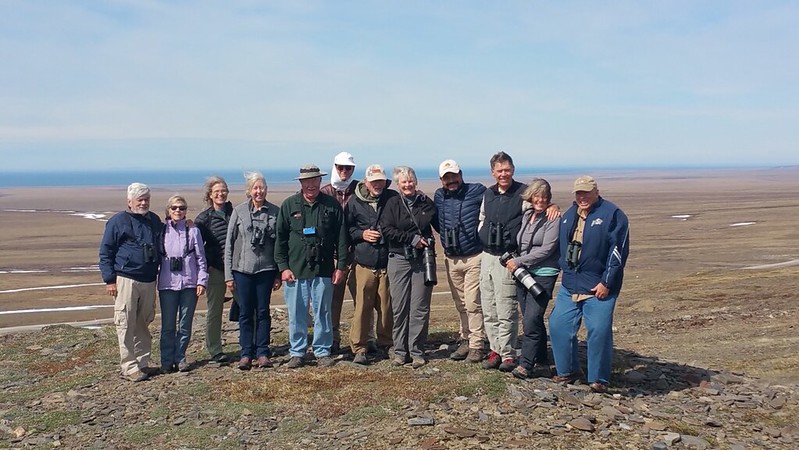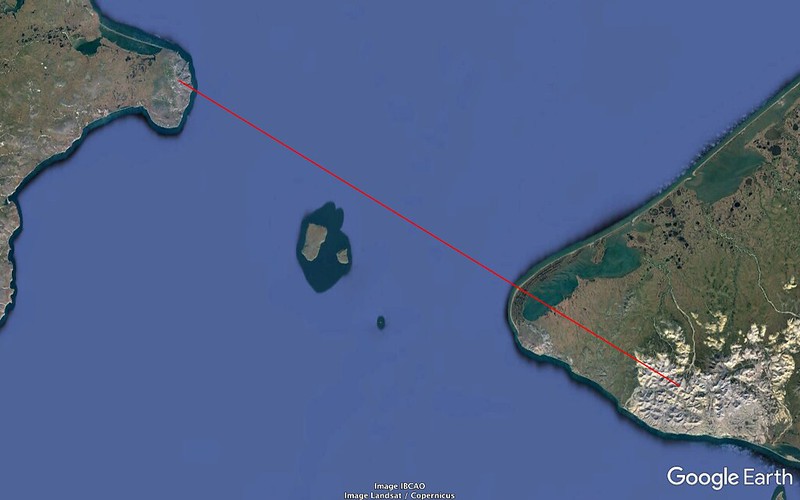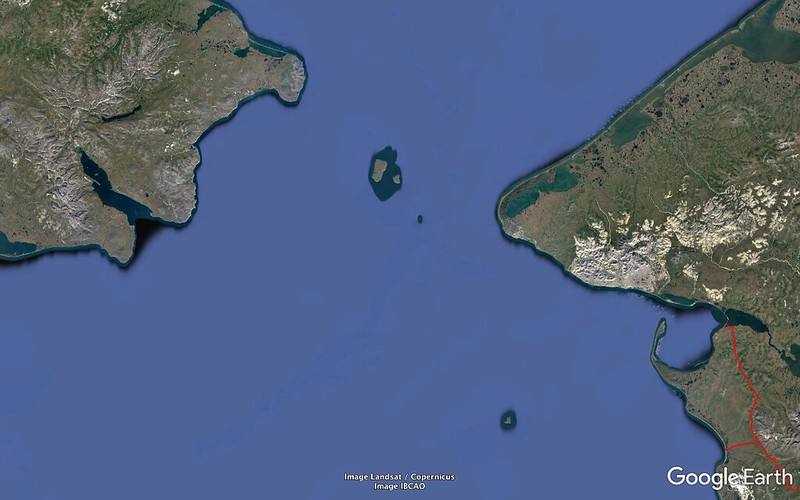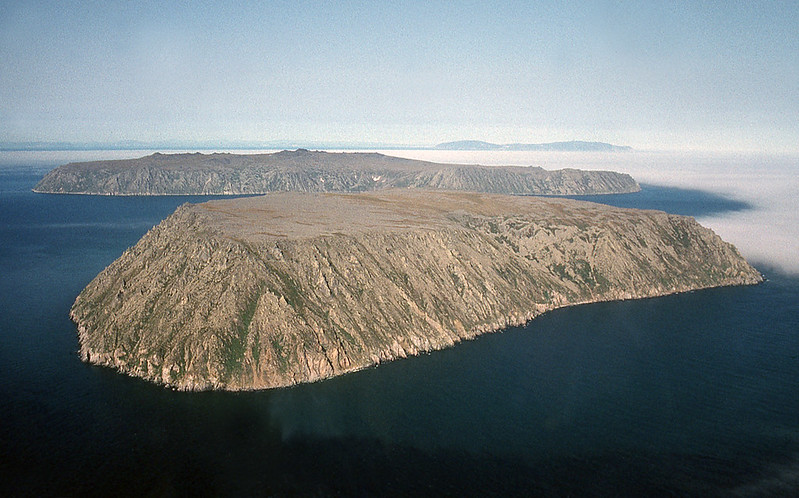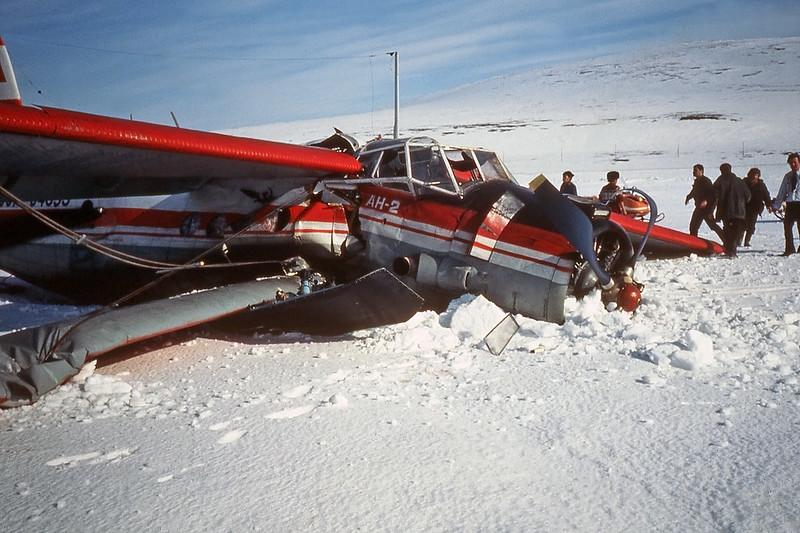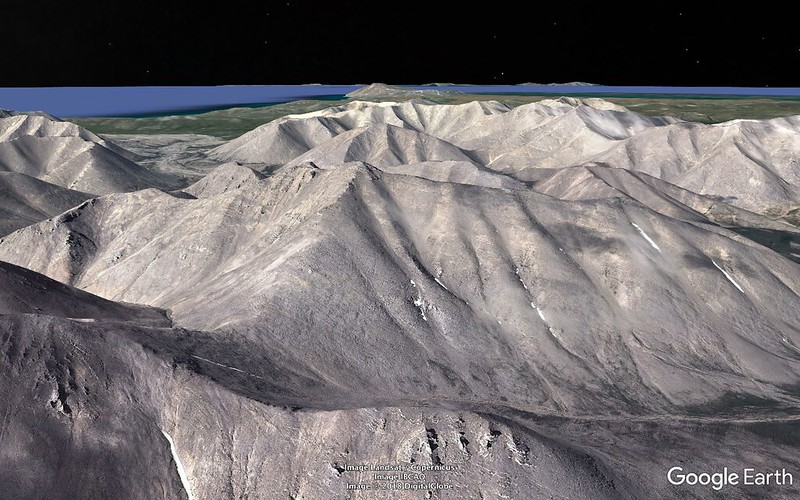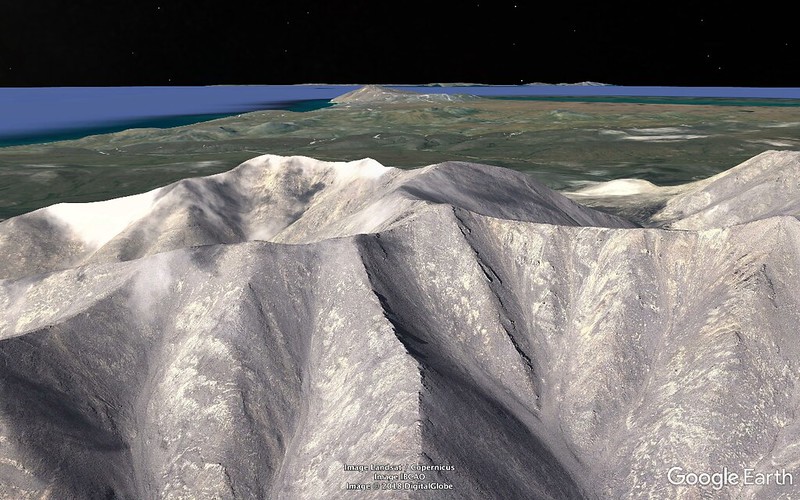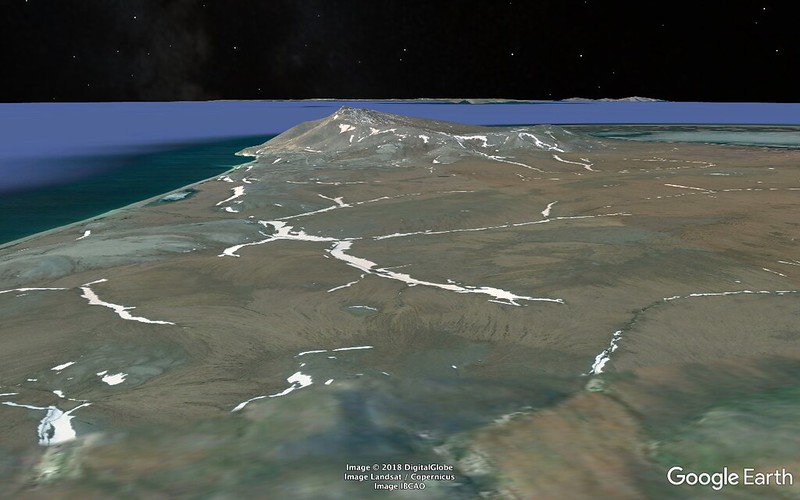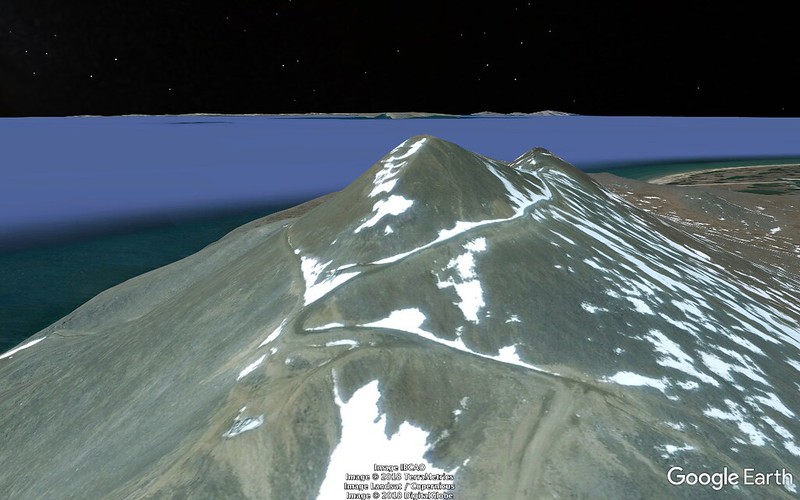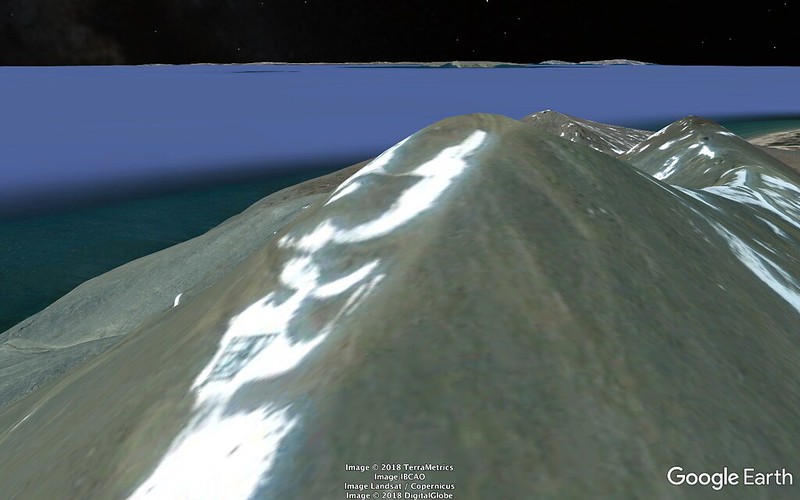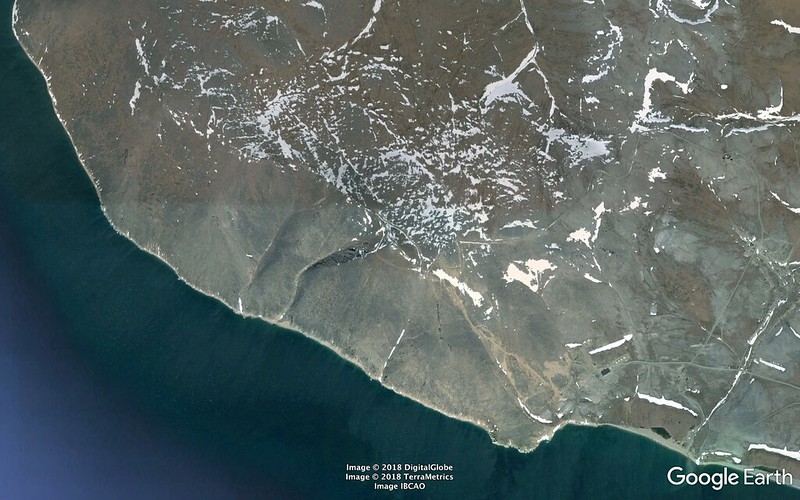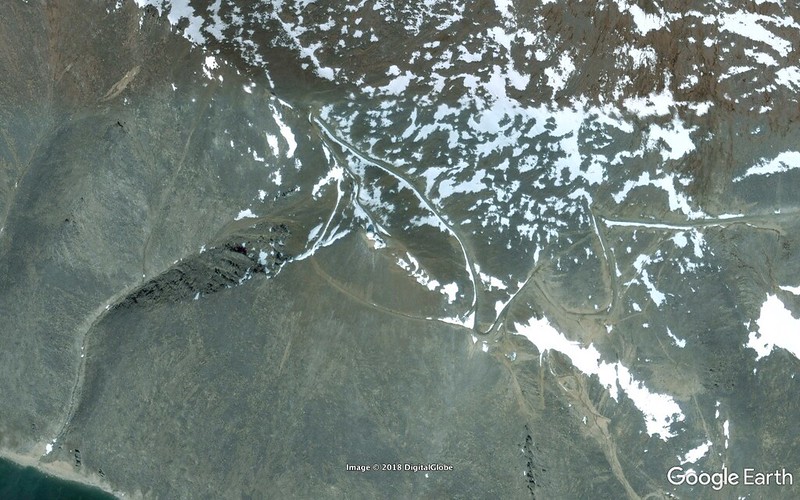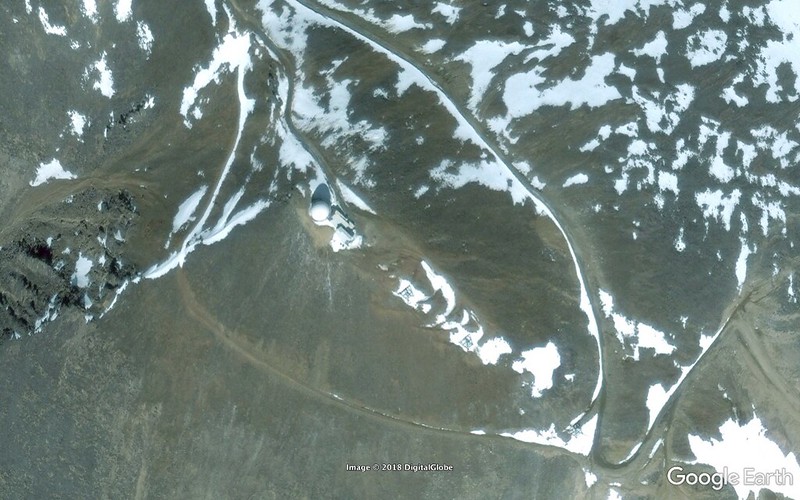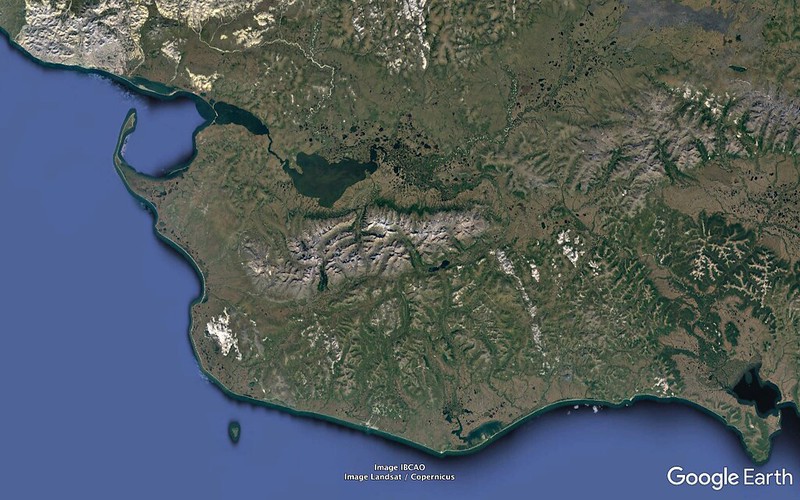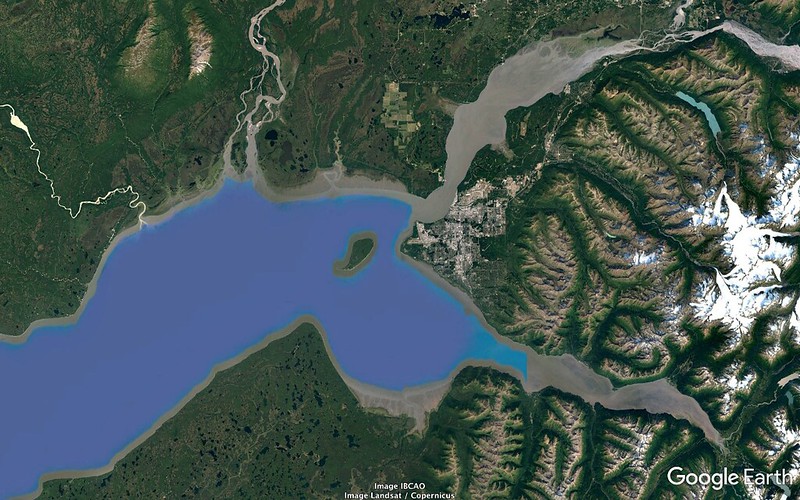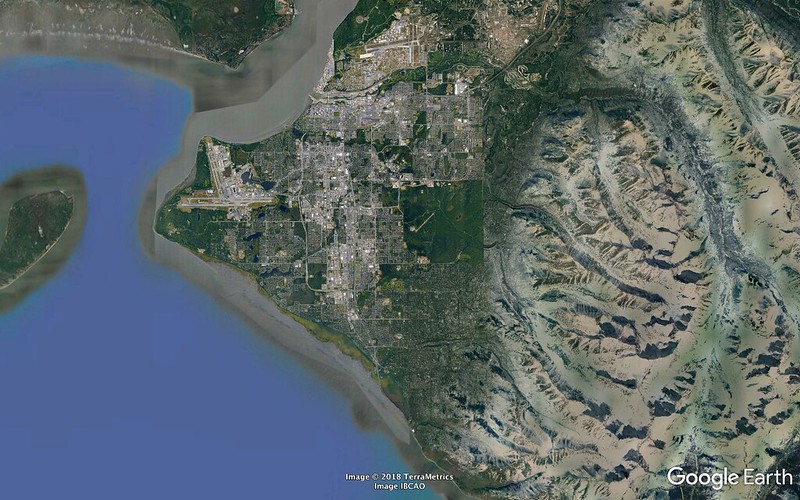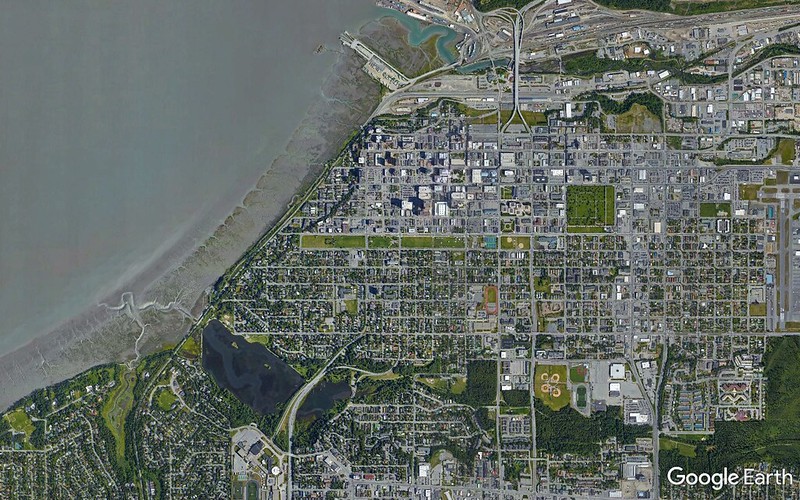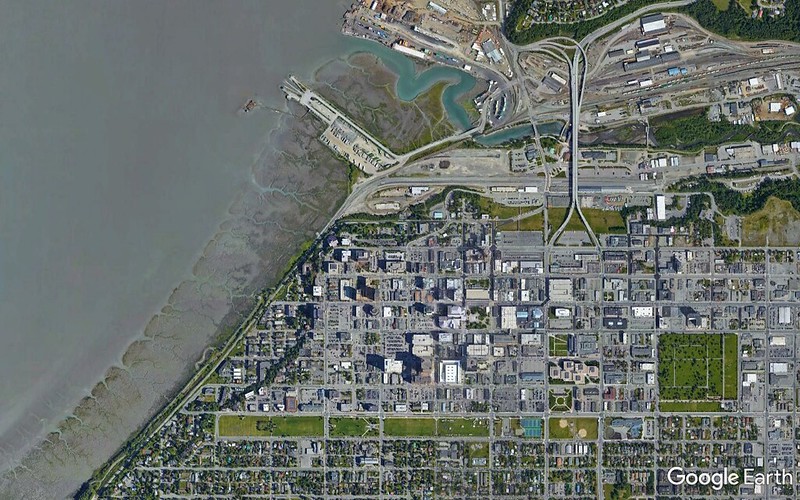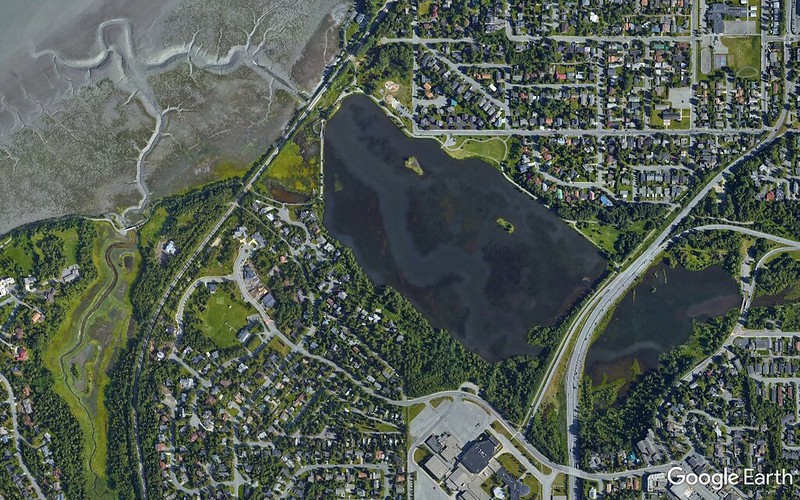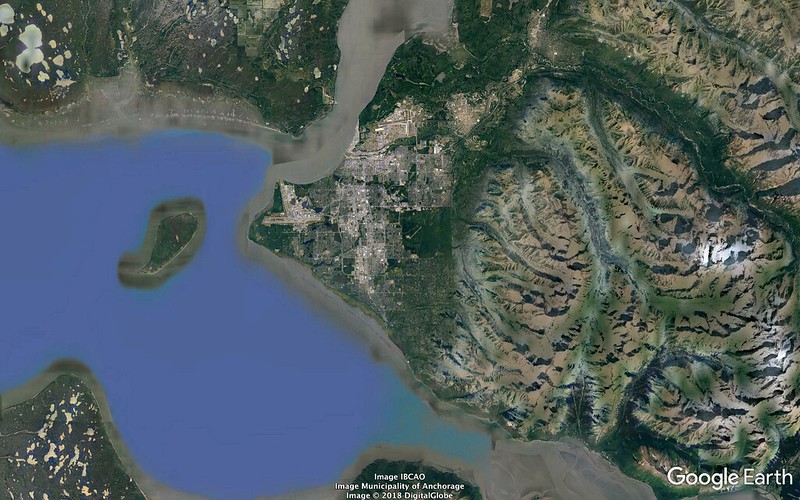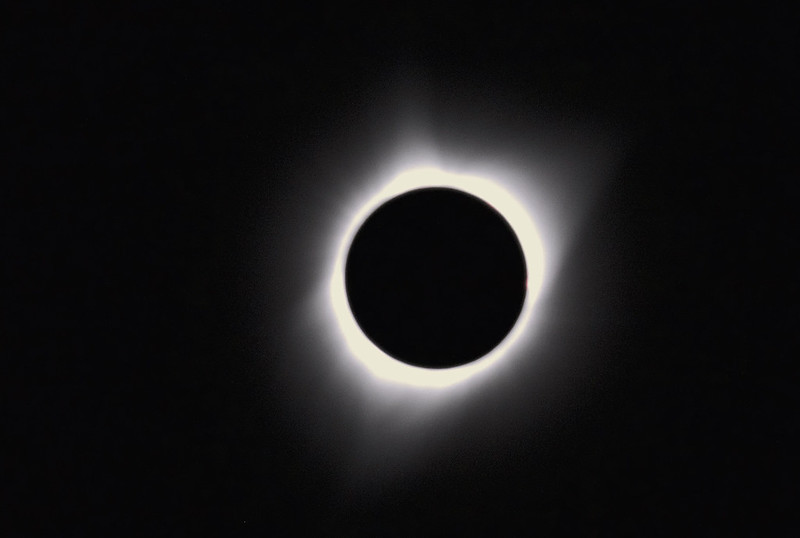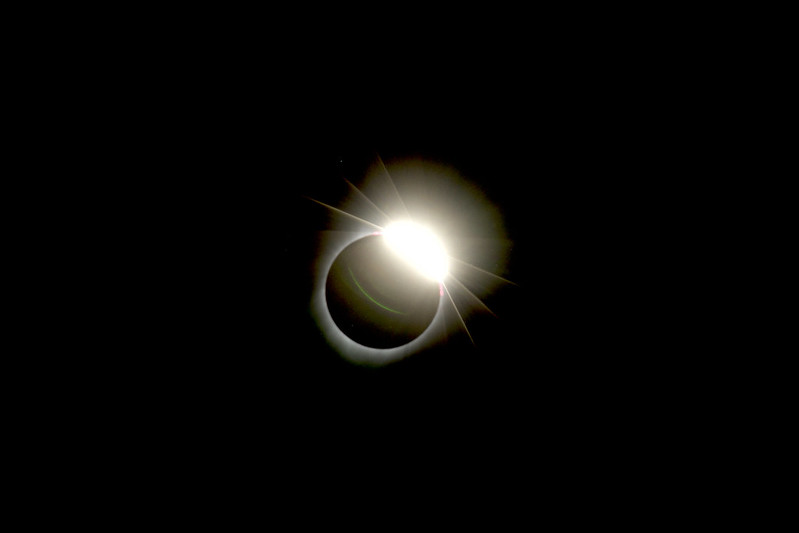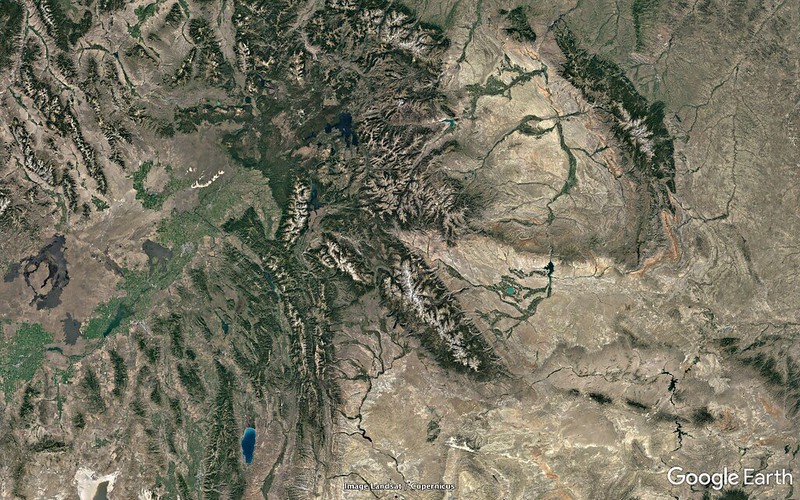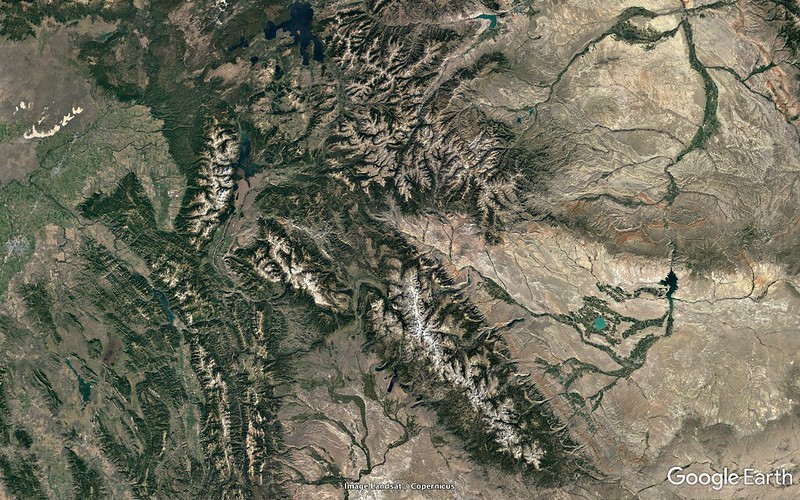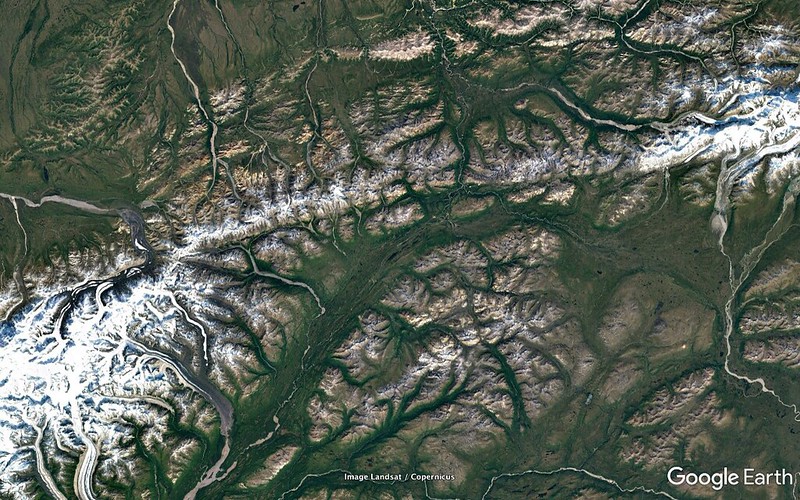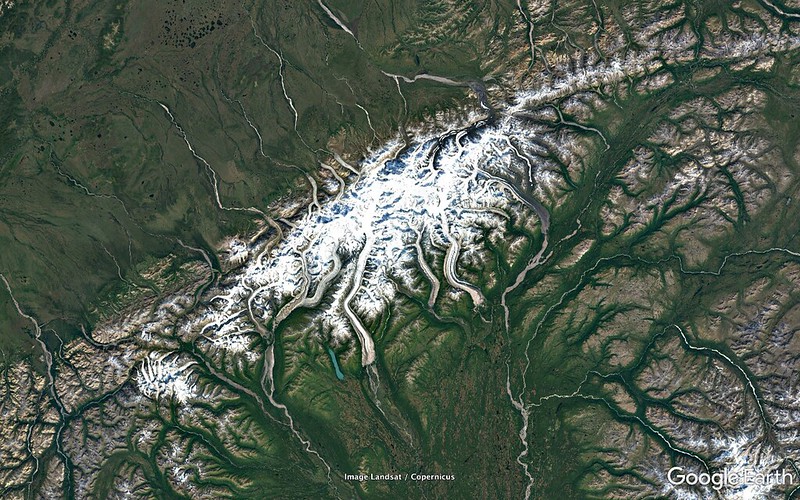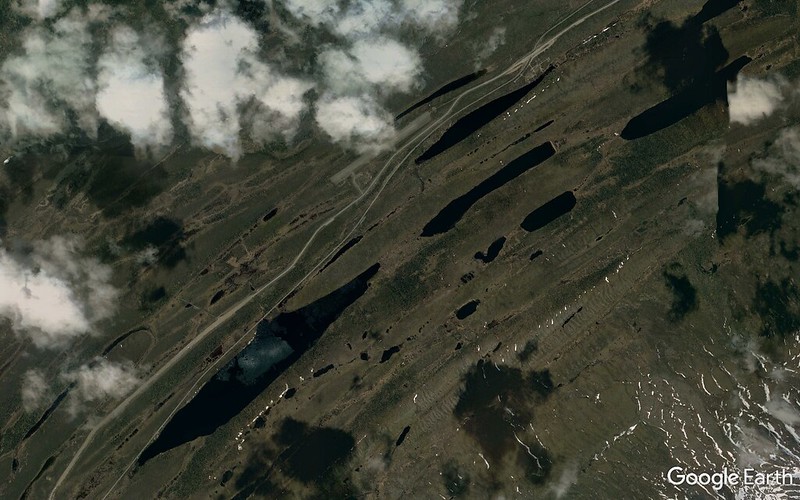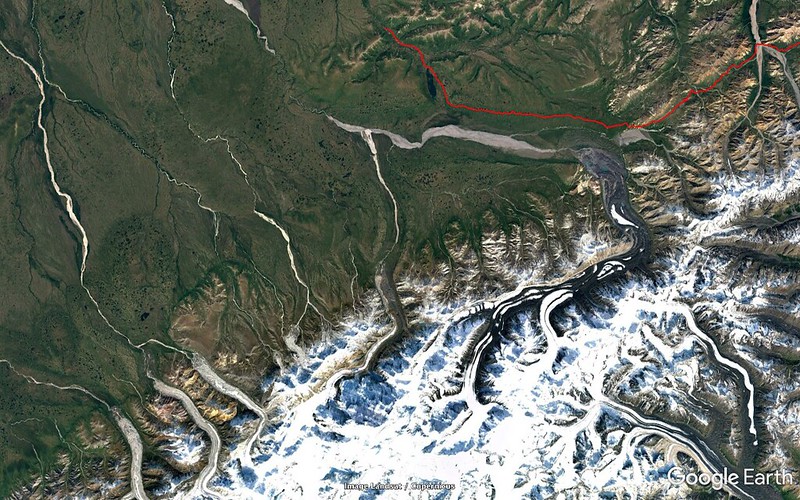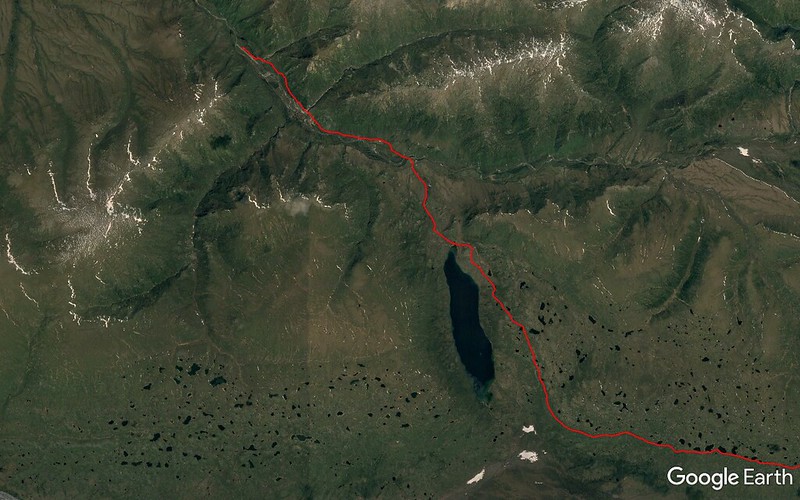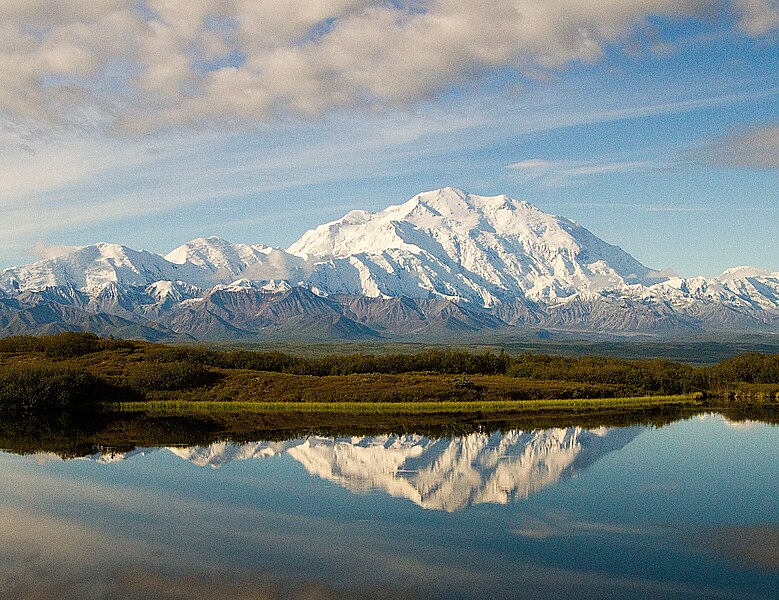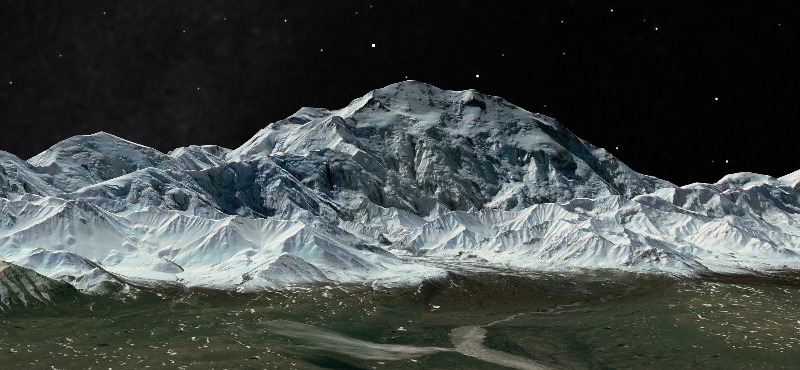2018/06/11 we dislodge from the Lodge and my luggage goes back into airport mode - save for keeping the primary scope/head/tripod configuration readily accessible - 'cause our next transportation link is the Denali Star ride back to Anchorage on the Alaska Railroad. Baggage works in a manner similar to what happens at an airport - minus all the pain-in-the-ass security and limits issues. Bulky stuff gets tagged and checked below, carry-on gets carried on. But there's no overhead compartment 'cause that area is the glass you'll be looking through and zilch space to spare elsewhere.
58
http://c2.staticflickr.com/2/1764/29546644658_4413d208d5_o.png
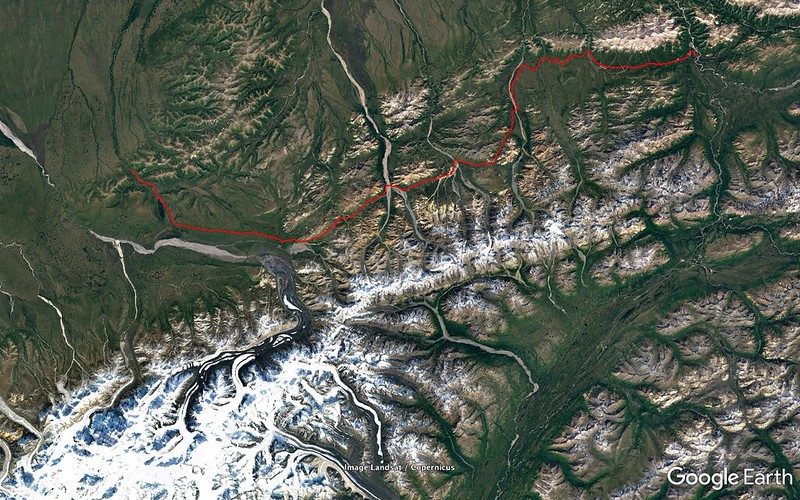
The sky around that end of the road is a bit crappy and there's not much in Denali's direction to attract a lot of attention but the situation improves with distance east and time. I hafta discipline myself to keep adhering to the if-it's-not-twice-as-high-as-everything-else-around-it-then-it's-not-Denali rule.
Eventually things start improving fast and we get a spectacular view of the top half of the real deal from a new and probably better angle. There's a reasonably shallow layer between the tops of the regular mortal peaks of the Alaska Range and Denali's business end and the effect is totally unworldly. It looks like Denali has arrived courtesy of some vastly superior extraterrestrial civilization and is just hovering above the distinctly inferior homegrown stuff.
I'm sitting on the aisle on the right/south half of the bus about halfway back and we get a Merlin. Just a small powerful black falcon silhouette for about one and three quarters seconds but I'll take it.
Do the Eielson Visitor Center. We've stopped at it on the way in plus once or twice on a day trip or two but I've previously been too trashed to half properly check it out.
It's got a totally awesome model of Denali in the center of the center with labeled buttons around the periphery. Push them and they fire little Christmas tree lights which allow you to identify/locate peaks, glaciers, valleys, rivers, approaches.
At the counter there are some skulls and a Dall's ram horn. I'm astounded by its weight. I think it was fifteen pounds - and there would've been another one just like it for the other side. All that weight and bulk to carry around most of one's life for the primary purpose of bashing rival rams backwards and gaining or retaining control of harems.
In a similar vein... Out front there's a pair of bull Moose skulls that were recovered from the tundra with antlers locked together. A protrusion on one of the antlers projects into an eye socket of the other animal. Horrible stuff like this isn't supposed to happen. Somebody's supposed to win and the loser's supposed to withdraw just beat up a little.
They note that an antler from one of the bulls is slightly deformed and that the asymmetry it introduced into the collision contact was probably responsible for the lock.
And I recently heard or read somewhere that when the body of a deer (a Moose is a mega-deer) sustains an injury the antler on the opposite side is prone to growing with a deformity. And so far nobody has a freakin' clue why or how so far.
I've hit it off pretty well with the park guy and gal manning the center but the bus needs to continue on. And I guess I need to continue on with it.
56
http://c1.staticflickr.com/1/915/42167435665_a9ca2d8bd8_o.png
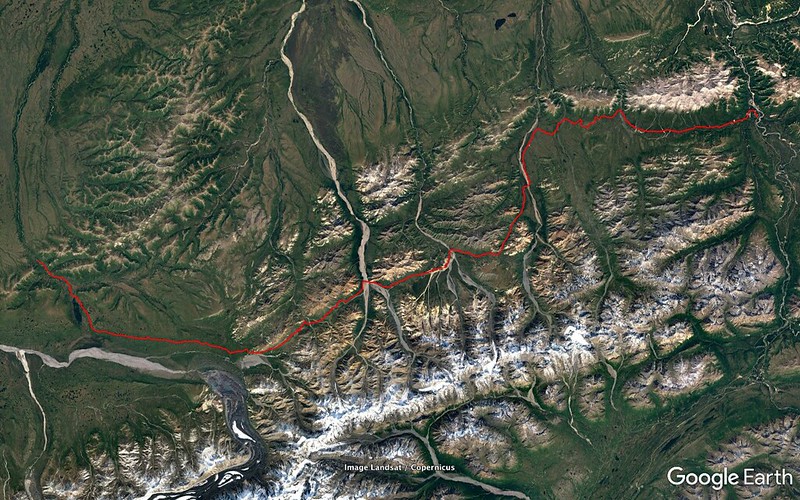
A bit on and we're in fairly heavy snow - coming down ten days prior to the summer solstice and thoroughly whitening the tundra. Visibility's still pretty good though and we do OK picking up more Bear, Moose, Caribou, Sheep.
Take a substantial rest, stretch, lunch, snack stop after we get through the snow or it decides to stop at a pretty well developed facility. Can't properly recall or ID it from Google Earth but my best guess is that was at the campground area at the Savage River crossing at the end of the private vehicles range (northernmost point of the Park Road as in the frame above).
DO NOT FEED THE WILDLIFE signs all over the place but I've been handed an oatmeal cookie and now I've got a Mew Gull standing six feet in front of me giving me that look. Oops, a crumb from my cookie seems to have broken off accidentally and fallen in front of me. Better pick it up and properly dispose of it in a bear proof steel garbage container. But that gull might bite me as I'm reaching for it. Better take a step back and think this through properly. Evidence gone.
There's a small herd of Sheep up on a steep slope above us. I hit 'em with the scope and adjust the level for members of our group and other park visitors.
We continue on towards the park entrance and run through an extensive area of Black Spruce growing somewhat sparsely on the south facing slope of the Healy Range. They hadn't really registered on the way in but now after I haven't seen anything remotely resembling a tree for three days...
Ann keeps scanning to the side out of her window. She looks just like I do when cruising through Joshua Tree desert habitat scanning for Shrikes.
"What are you looking for?"
"A Hawk Owl."
Oh wow! That's a really cool bird. I can really use one of those. And that would be a lifer for at least a good chunk of our group. So I start pretending the Spruces are Joshuas and alter my profile preferences accordingly.
And as I write this it occurs to me that none of our guides - Naturalist Journeys or North Face Lodge - has advised us to be on alert for this bird in this particular habitat. Ditto for the ride in. I wonder what's going on with that. Minimize the danger of a non commercial interest scoring something really good for the group on his/her own?
Here's what it says in the Naturalist Journeys brochure for this particular expedition:
Mon., June 11 Denali National Park / Train to Anchorage
Our return trip through the park is full of anticipation ... we never know what we may see! We keep our eyes open for rare sightings of Gray Wolf and even Lynx -- not likely, but possible! We have seen Arctic Ground Squirrel, the blue morph of Red Fox, and, in some years, Northern Hawk Owl. We do have to meet the train so we can’t linger, but we always hope for unusual sightings and photo opportunities.
Nothing about keeping our eyes peeled for a Hawk Owl during the Black Spruce leg of the run. And I wonder why this iconic bird is only an item for the trip BACK OUT.
And this isn't a bird that requires any particular skill or experience to find. Just scan the Spruce tops for a rather substantial lump. The more untrained but dedicated pairs of eyes the merrier.
And it isn't long before Ann scores. I'm a second and a half behind getting what she got but I'm unable to get a lock with the glasses before it takes off - parallel to our direction of travel. From what I PERCEIVED I'd have guessed Merlin. I couldn't make it an owl head.
But a suspiciously short roll ahead and on again off to starboard at fairly short range we've got an indisputable Hawk Owl. I think it took a(nother ?) short hop before stabilizing into cooperative mode.
We need to adjust bus position back a bit for a good clean shot before this bird decides he'd rather be someplace else and Ann calls the request. Our North Face Lodge guide/driver - one of the many individuals on board who had no part in this score - doesn't seem much interested and voices a concern about the buses behind him. I do a quick check of our six and see the better part of a mile of straight Park Road without so much as an Arctic Ground Squirrel encroaching on our position - nothing but air.
Roodal Ramlal / Channel-Billed Toucans déjà vu. He's LYING to us and I'm not in the mood. "HEY! We've got a HAWK OWL here!" (And I'm not gonna take bullshit like this very lightly - asshole.)
http://c1.staticflickr.com/1/857/28610567577_dd212c096f_o.png
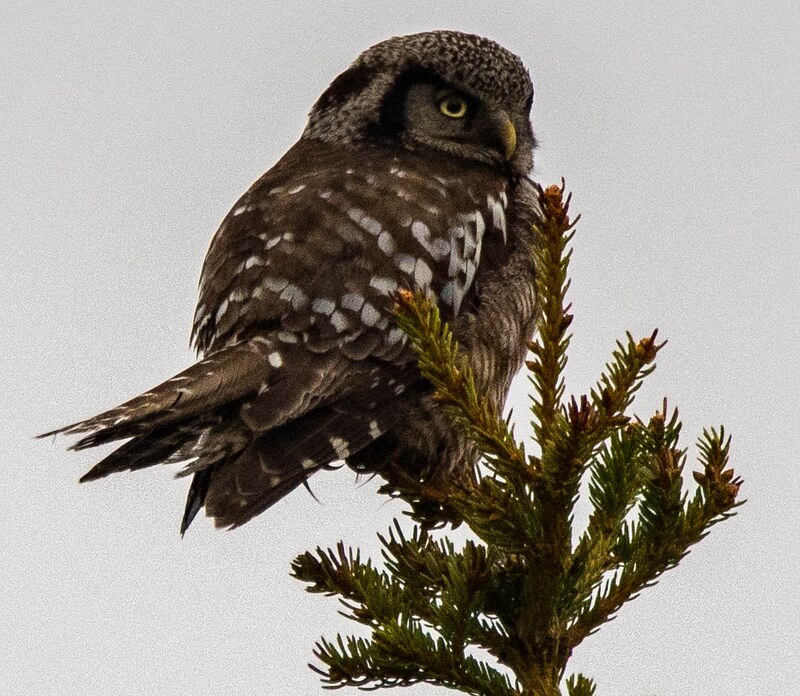
Ann Constantino - 2018/06/11
Denali National Park
And then he's gone elsewhere and out of sight.
And we continue on to our rendezvous with the train with Yours Truly smoldering a bit.
There's a Red Fox den in the open and within an easy shot of the road. A parent and I think eight third grown kids. The kids are chasing each other around, totally unconcerned with our presence, cute as hell, and we stay and watch for a long time. But I'm still smoldering and not enjoying things as much as a would be otherwise.
And farther down the road we pick up group of several Caribou. And they get a stop with a generous time allotment.
OK, but I've gotten twice as many Fox species in the back yard (had a Red under the bird feeders late Monday morning) and we'd never had to go very long between good Caribou sightings throughout our Denali stay. If we can afford this much time for these last two stops then a minute and a half for the previous one shouldn't have been asking for too much.
Soon we're disembarking at the Park entrance/exit...
54
http://c2.staticflickr.com/2/1807/42479211695_1f4da3636a_o.png
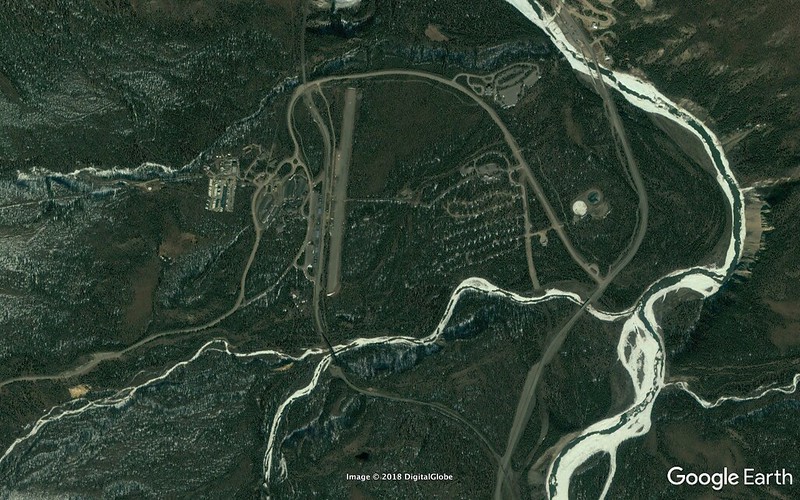
...with TONS of time to spare prior to our 12:30 AKDT scheduled departure.
We get ourselves sorted out, transitioned from bus to rail mode, figure out where we're supposed to board. I see something else interesting at the top of a Spruce and hit it with the glasses. Gray Jay - my first and last jay of any description for the duration of the trip. I'd been expecting a handful of Steller's and lotsa Grays. HM had scored a Steller's at a feeder next to the Lakefront in Anchorage on 2018/06/01 while we were waiting for the Naturalist Journeys group to start forming. But a lawnmower had queered that deal before I was able to get a shot. And the group totally struck out on them over the official duration of the tour. And no references to Grays in the report beyond one scored on the Eagle River trail on 2018/06/07.
49
http://c2.staticflickr.com/2/1806/43368847901_deebf9e8a9_o.png
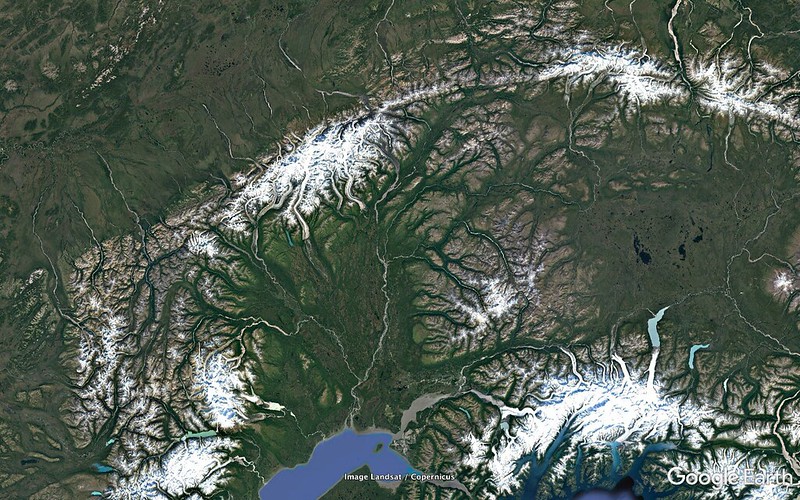
Hate to speak ill of public transportation and boost the profiles of private regular and SUV automobiles but... Train downsides:
- This thing is SLOW.
-- Travels on ITS schedule (not necessarily yours).
-- Doesn't:
--- depart from the point at which you last stopped
--- run all the way to your next chosen destination
-- Stops en route to:
--- discharge and pick up passengers at other stations
--- sidetrack to allow northbound trains to pass
--- swap out crews
-- Never gets up to highway speed limits even on long, straight, uninterrupted stretches.
- Gotta deal with multiple luggage issues.
- Although the upper deck is beautifully engineered with huge expanses of glass to the sides and up above the rail seems to favor the river bottom (as it should) a lot more than the highway. And just about all of the relevant leg of the route is rather densely forested so the vast majority of what you're seeing are the trees screens on both sides a few yards out.
- Trains don't and can't stop - or even slow down - for sightings of Moose, Eagles, Hawk Owls. And unless you're the one who spots the Moose you're probably not gonna see it because in the time it takes you to respond to the alert and position calls...
- Seating space is a bit more generous than what you'd get on a passenger jet aft of First Class.
Upsides:
- Smaller carbon footprint.
- It's different, kinda cool, and reasonably comfortable.
- All the glass works to your advantage every now and then.
- You can get:
-- up and walk around pretty easily
-- a civilized restaurant type meal at a table on the lower level
- They have knowledgeable guides on the PA giving you interesting background info and answering your questions.
Allowing smidgens for boarding and disembarking It's an eight hour ride (much more realistically) - twice what it would take at a modest speed in a rental car on the highway - but I don't have unpleasant memories of it. The Hurricane Gulch crossing is spectacular. I keep the GPS running and targeting Denali but the sky cover isn't gonna give us the slightest break this time. Get a few Moose, miss a lot more. Dock in Anchorage at 20:00 AKDT. Checked baggage recovery works a lot like at an airport - involves a bit of walking, snaking through crowd crushes, standing around.
I'm NOT in good shape at this point in the trip. Legs just keep getting more and more swollen since I NEVER get the couple days I need to stay mostly horizontal and start making a significant dent in the problem. And even relatively comfortable travel days such as this one tend to wear one down a fair bit.
Greg is managing the herd and organizing for the shuttle back to the Copper Whale Inn via taxi. I'm heavily loaded with all my trip gear bringing up the rear and obviously hurting to a substantial degree. Greg's at the target point, I'm fifty yards out and closing. Both of us are tall and I'm making eye contact with Greg over all the heads in the relevant area of the crowd. Greg calls loudly and clearly "Over here, Tad!"
Thanks for broadcasting that extremely useful information, Greg. Otherwise I'd have had absolutely no idea that you were over there and/or that I should be proceeding to that point. And please don't trouble yourself to relieve me of any of the gear that's benefitting the group you're getting paid to lead - or ask another group member to give me a hand.
Back to the Copper Whale - same upper level but somewhat cramped room (Susitna) as before, dinner on our own next door.
Both the days from/to the Copper Whale and to/from the North Face Lodge seem like weeks. Such distances and changes in habitats and scenery. Earlier in this day we're in the tundra at close to four thousand feet in a heavy steady snowstorm weaving through Grizzlies and Caribou. Near its end - according to the clock - we're in a nice corner of a substantial city with the summer sun high and blazing. Not all that different from what things would've been like in the afternoon of the same day in Baltimore back homeways. Psychologically overwhelming.
A little amendment regarding the Hawk Owl...
This is actually the NORTHERN Hawk Owl. It's found across the northern latitudes of both the Old and New Worlds and is in its own single species genus, Surnia (ulula), and is not closely related to about thirty species of Old World owls in genus Ninox, many of which bear a "Hawk-Owl" name. (Since they're all Old World we can skip the Northern part of this one's name over here without causing any confusion.)
It's a heavily biased diurnal hunter and, as previously noted, there's not a lot of daylight around in the winter solstice ballpark in the northern reaches of their range. But although they're essentially nonmigratory:
- there are periods of the days in the winter in the higher latitudes when the sun's making a long shallow skim not far below the horizon
- they can fly and can and do move into southern areas of their breeding range (and sometimes well beyond it) with little effort
P.S. That photo of Ann's, which I've substantially cropped, is amazingly high quality - 'specially considering it was shot hand-held with a long telephoto from inside of a tour bus (window open) in dreary light. And use the URL to go to full res for an even better appreciation.
P.P.S. I've amended my 2017/01/21 14:11:57 UTC post with respect to Asa Wright guides Roodal and son Dave.
http://www.kitestrings.org/post9899.html#p9899
P.P.P.S. And now that I think about it... There's a pretty substantial commercial link between my Channel-Billed Toucans on Trinidad and this Northern Hawk Owl in Denali.
Roodal Ramlal is the Asa Wright Nature Centre senior guide. Ya wanna stay at Asa Wright ya gotta book through Naturalist Journeys / Caligo Ventures. This Alaska tour with its North Face Lodge subpackage was Naturalist Journeys / Caligo Ventures. And the guide at the bus wheel when we were trying to do that Hawk Owl...
About 5500 miles and over 53 degrees of latitude apart. From well into the tropics to less than two hundred miles shy of the Arctic Circle. Small freakin' world.
P.P.P.P.S. - 2018/07/20 06:00:00 UTC
HM believes there WAS a call to peel eyes for Hawk Owls prior to hitting the Spruce on the way BACK OUT. But if so it doesn't appear that much of an effort was made to make sure Yours Truly was tuned in. Every other comment I had on this on stands.
And along this line... One of the other group members had told me that during a return in Greg's van back to Nome during the Seward Peninsula stage on one of the three roads he thought he had a Shrike. And if one THINKS one has a Shrike in that kind of turf one HAS a SHRIKE - 'cause there's nothing else for which it can possibly be mistaken. But he didn't say anything 'cause Greg was hauling ass and he thought Greg just wanted to get back to the hotel and wouldn't have appreciated the interruption/distraction. That was an EXTREMELY valuable bird and had been REAL high on my priorities list - like in the Top Two along with Gyrfalcon.
Checked out the Hawk Owl's range a bit more carefully. Its northern extent tends to stop right around the Arctic Circle around a solid most of the Northern Hemisphere.
Meant to note that the number of Wolves we scored in Denali National Park was zero - identical to what we had in downtown Anchorage. The reason for that was probably that - with the blessings of Alaska state laws - Denali Wolves tend to get annihilated within ten of fifteen seconds of setting a toe outside of Park boundaries. Molten hot political issue.
P.P.P.P.P.S. - 2018/07/25 11:45:00 UTC
From Greg's trip report:
Caribou were closer to the road this year and last with low predation pressure, given the continued onslaught of those in Alaska that feel it is a rite of passage to take a wolf simply to hang on the wall.
